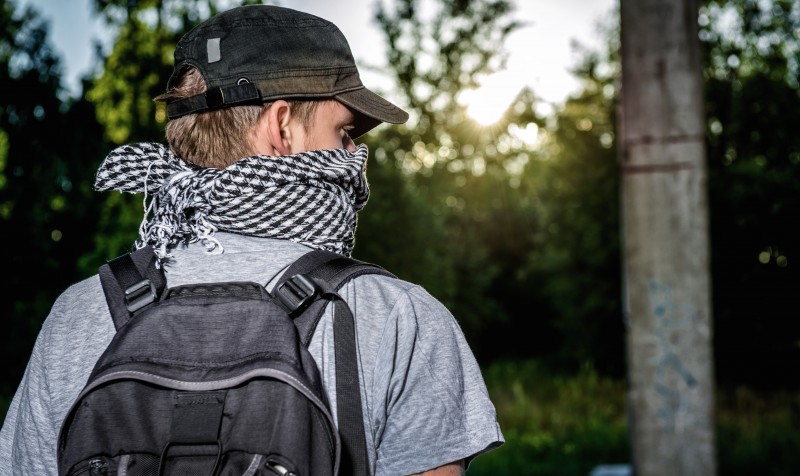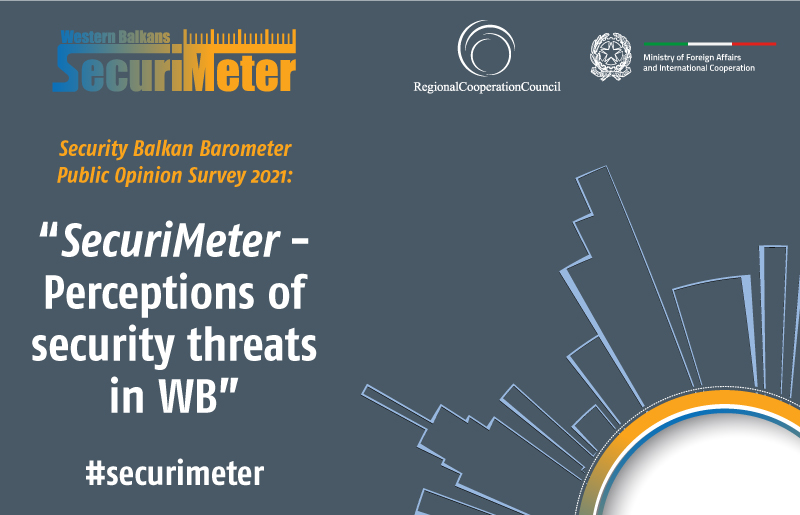- Home/
- News
Working With the Youth: Countering Violent Extremism in North Macedonia
After the collapse of Yugoslavia, the newly independent Balkan countries have become quite attractive for many movements, ideologies and organisations, including extremist groups with roots in the Middle East. Some of them came to the region during the Bosnian War between 1992-95, others during the Kosovo War in 1999. In North Macedonia, the spread of extremist groups started to be significant after the “Armed conflict of 2001”. The insurgency provided a fertile ground for rooting violent extremism into the fabric of multi-ethnic North Macedonia and for recruiting new members to terrorist groups fighting in Syria and Iraq. According to official statistics, the estimated number of North Macedonians joining violent extremist groups such as ISIS or Al-Nusra in 2016 was 110.
Often unhappy with their situation, living in a country with high unemployment rate and lack of job opportunities, feeling misunderstood and marginalised, young people are the most vulnerable group targeted by recruiters as well as radical ‘religious preachers’. In the past, the general approach to counter violent extremism by state institutions was not very successful. For almost two decades, North Macedonia was dealing with extremism by taking mostly repressive measures such as updating criminal law and conducting police operations leading to arrests of suspected extremists. This approach was in line with the generally accepted strategy for fighting terrorism. There were two large law-enforcement operations (coined as ‘Cell 1’ and ‘Cell 2’ – August 2015), during which 14 individuals were arrested as suspected of conducting recruitment, financing or fostering travels of foreign fighters from North Macedonia to Syria and Iraq. Here again, the most susceptible group to radicalisation were young people.
Moreover, violent extremism has been misused by political elites to their advantage. A well-known example was the “Monster Case” – a tragic incident in 2012, where 5 ethnic North Macedonians were killed under (up until today) unclear circumstances. Yet the next day after the murder, the Minister of Interior Affairs proclaimed that ‘this horrific assassination was perpetrated by followers of radical Islam’, without providing any relevant evidence. This increased interethnic tension in the country and led to mass demonstrations. These attracted especially young people who felt victimised for their ethnic belonging or religion. Since June 2017, North Macedonia has had a new government and the case has been re-opened, whereby all the imprisoned individuals, sentenced to life imprisonment, have been released due to the lack of evidence.
The new Republic of North Macedonian government has introduced softer measures to prevent and counter radicalisation and extremism in the country. On 6 March 2018, two separate strategies were adopted – the “Prevention of Violent Extremism” (PVE) and an updated ”Strategy on Countering Terrorism” (CT). The National Strategy for PVE is based on the latest grass roots research on community dynamics with regard to extremism, conducted by Civil Society Organisations (CSOs) in North Macedonia.
Part of that research is also our latest report[1], which addresses youth radicalisation and its vulnerability to violent extremism. The report is based on research conducted for the Analytica Think Tank in the communities of Skopje in 2017.
The research has revealed that after the government introduced repressive measures against violent extremist groups in North Macedonia, the groups went ‘underground’ and thus have become extremely difficult to monitor. In addition, the research traced community resilience against extremist groups. However, this resilience is not a result of functional cooperation between the community and other stakeholders, particularly public institutions. On the contrary, there is a lack of trust between communities and state institutions, especially the law enforcement.
The research was conducted in nine Skopjan high schools, examining their potential to foster youth radicalisation and the probability with which it might lead to violent extremism. According to the results, radicalisation can be influenced by the following factors:
- - Lack of communication between the teacher, parent and student. Seems like a vicious circle – teachers complain that parents do not attend the parents’ meetings at school, and the former, in turn, don’t talk sufficiently to each other about students’ behavior, achievements and attendance. Students, on the other side, feel a lack of appreciation by their parents and teachers, and thus might look for it among their friends, relatives, or even self-proclaimed ‘religious preachers’ with extremist world-views.
- - Lack of multiethnic education. Only very few schools in North Macedonia have multiethnic classes and those which do are all private. Public schools hold ethnically separated classes. For the majority of students, their first interaction with peers with different ethnic backgrounds is at university. This ‘segregation’ in the education system plays a crucial role in the formation of extremist groups.
- - Online propaganda (in local languages) by extremist groups. Extremist propaganda is another catalysing factor which accelerates both radicalisation and violent extremism among the youth in North Macedonia. In our research, we reviewed the online content promoting violent extremism in North Macedonia[2] and found out that the online space provides an easy way to reach broad masses of young people. While in informal face-to-face sessions the self-proclaimed ‘religious preachers’ are able to reach an audience of only 20 – 30 people, in cyber space, and especially on social networks, the number of followers rises by thousands. The frequency of such postings, including attractive videos, memes and pictures, is quite concerning – while extremist social media pages post several times a day, social media pages of official religious communities do so once or twice a week, if not less. As a result, it is more likely that a young person searching for religious content gets to the webpage of a self-proclaimed ‘religious preacher’ rather than to an official religious community’s webpage.
- - Ethnocentric high-school curriculum. Giving priority to a particular ethnic group, religion or culture, some textbooks (especially those on history) might trigger the youth to radicalisation. In addition, such textbooks prompt young people to reach for ‘alternative sources’, that are, however, usually marred by disinformation and malicious propaganda.
- - After-school activities. These are another important factor in gaining new followers. High schools usually do not have sufficient capacities for organising extracurricular activities, which gives the extremist groups great opportunity to fill in this vacuum and attract new members. Given this fact, it is very important that schools work on developing programmes of after-school activities to prevent violent extremism.
Considering all the above-mentioned, it is clear that North Macedonian youth is under increasing danger of becoming engulfed by violent extremist groups. The shortcomings in the North Macedonian education system need to be addressed as soon as possible in order to minimise the window of opportunity for extremist groups to radicalise young people.
Addressing these issues should be a subject of cooperation between public institutions, non-governmental actors, main stakeholders and donors. Experience has shown that such approach, preferring softer, multifaceted and multilayered measures, is more useful and has the potential to lead to positive outcomes.
--------
[1] Report of the Research: “Working towards Resilient Communities”, Samet Shabani and Amir Kadri, Analytica Think Tank, 2018.
[2] Ibid
Source: Link



 Development of specialized PCVE web site is funded by EU FUNDS CN 2017-386/831 - "IPA II 2016 Regional Action on P/CVE in the Western Balkans"
Development of specialized PCVE web site is funded by EU FUNDS CN 2017-386/831 - "IPA II 2016 Regional Action on P/CVE in the Western Balkans"